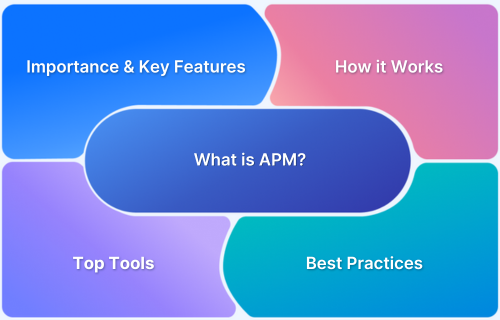APIs (Application Programming Interfaces) form the core of how different software services interact and exchange data.
Overview
What is API Performance Testing?
API performance testing measures how well an API performs under various conditions, such as high traffic or system stress. It ensures fast, reliable, and scalable APIs, directly impacting user satisfaction and system efficiency.
Why is API Performance Testing Important?
- High-performing APIs ensure smooth and responsive interactions for end users.
- Confirms that APIs can consistently handle expected traffic without failing.
- Evaluates if the API can grow with user demand and handle traffic spikes.
- Detects inefficiencies early, reducing the need for expensive infrastructure fixes.
Common Types of API Performance Testing
- Load Testing: Checks API performance under expected user traffic.
- Stress Testing: Tests the API beyond its limits to find failure points.
- Spike Testing: Evaluates how the API handles sudden traffic surges.
- Endurance Testing: Runs the API over time to catch memory leaks or slowdowns.
- Volume Testing: Assesses performance with large data loads.
- Latency Testing: Measures response delay,which is key for real-time apps.
This article gives a complete overview of API testing, its importance, and how and when to perform it using some best practices.
What is API Performance Testing?
API performance testing evaluates an API’s reliability, speed, and behavior under various conditions.
It helps determine how well the API handles stress, manages responsiveness, and scales during traffic surges.
Importance of API Performance Testing
There are several reasons why you should conduct API performance testing. These reasons are outlined below:
- Quick Identification of Issues: API performance testing reveals bottlenecks that users may encounter after deployment.
- Smoother User Experience: Users of an API service can be guaranteed a seamless experience with faster response times.
- Scalability and Resource Allocation: This will help determine how many resources should be allocated to an API to allow it to scale as the load increases.
- Ensure Reliability: Possible breaking points of an API will be evaluated when tested under extreme conditions and fixed to boost its reliability.
- Cost Saving: Fixing performance issues like memory leaks and downtime, after thorough testing, is less expensive than after deployment.
- Good Brand Image: A reliable API service will make loyal customers, increase revenue, and boost brand image.
Key Metrics Measured in API Performance Testing
To evaluate API performance under various conditions, focus on these essential metrics:
- Response Time: Measures how quickly the API returns a response after receiving a request.
- Throughput: Number of successful requests processed per second, indicating API efficiency.
- Latency: Time delay between sending a request and receiving the first byte of the response.
- Error Rate: Percentage of failed requests (e.g., 4xx or 5xx errors), highlighting reliability issues.
- Uptime: Reflects the API’s availability and operational consistency.
- Concurrency: Tracks how many simultaneous requests the API can handle, which is critical in concurrency testing.
- Success Rate: Refers to the percentage of requests that return a successful response.
Learn More: What is API Testing? (with Examples)
Types of API Performance Testing
The various types of API performance testing are set up to test the behavior of an API under certain specific conditions. These tests include the following:
- Load Testing: This test evaluates the performance of an API under expected user loads, usually from a particular number towards maximum capacity.
- Stress Testing: In this case, the API is tested beyond its maximum capacity to determine a possible breaking point.
- Spike Testing: Measures how the API behaves during a sudden surge in user requests.
- Endurance/Soak Testing: An API is used continuously for an extended period to identify issues such as memory leaks, performance drop, resource depletion, etc.
- Volume Testing: Tests how an API handles extensive data processing simultaneously.
- Latency Testing: The delay between when a request is made to an API and when a response is returned is measured here. This is essential for real-time applications.
How to Perform API Performance Testing
Some processes must be observed when conducting API performance tests for reliability, scalability, accessibility, etc. Outlined below are steps to achieve this:
- Outline Testing Objectives: Clearly outline what key metrics you want to measure during the test, such as latency, response time, success rate, etc.
- Set Acceptance Benchmarks: Pick out acceptable limits for key metrics being tested.
- Select Tools: Choose the right type of tool that is most suitable for your testing process.
- Create Test Environment: Configure the test environment to simulate production with required dependencies, data, network conditions, etc.
- Create Test Cases: Write test cases that closely mimic real-life interaction and scenarios.
- Execute Tests: Run the test cases and monitor performance metrics.
- Analyze Results: Dig deeper into the test results and identify issues with the key performance metrics.
- Optimize: Make changes to the test cases where necessary to fix identified bottlenecks.
- Retest: Execute the test cases again to discover any improvements after the effected changes.
- Report Findings: Make reports and charts, where possible, to summarize key metrics results.
Also Read: Response Time Testing in Software Testing
When to Perform API Performance Testing
API performance testing should be done at critical points in the development lifecycle, especially before production, to ensure the API can handle real-world load and spikes.
Ideal Scenarios for API Performance Testing:
- Before production deployment: Validate API behavior under expected and peak load conditions.
- Before high-traffic events (e.g., holiday sales): Simulate traffic surges (e.g., 2–3× normal volume) to test stability and identify performance bottlenecks ahead of major usage spikes.
- After implementing performance fixes: Re-test to confirm that issues have been resolved and improvements are effective.
- Prior to major releases or updates: Ensure that new features or code changes don’t impact API performance negatively.
Tools for API Performance Testing
Various tools help developers and QA teams run effective API performance tests, including response time, load, stress, and concurrency testing.
Below are 10 popular tools that support different testing needs:
1. Requestly
Requestly is a no-code platform that allows developers and testers to modify network requests in real time. It helps analyze API performance under different conditions by intercepting, redirecting, or delaying requests to simulate real-world behavior without changing backend code.
Here’s how Requestly helps with API performance testing:
- Network Simulation: Introduces artificial delays or throttling to test how APIs perform under slow or unstable network conditions.
- Response Mocking: Simulates API responses to measure front-end performance when backend services are unavailable or slow.
- Redirect and Rewrite Rules: Redirects API endpoints to alternate environments for A/B performance comparison.
- Request Blocking: Blocks specific endpoints to study system behavior and performance degradation under partial failure.
- Automation and Collaboration: Allows teams to share rules and automate performance validation within browser or mobile environments.
2. JMeter: Open-source tool by Apache for load testing web apps and APIs. Java-based with strong support for custom scenarios and performance metrics.
3. Postman: Popular API development platform with features for automated testing, monitoring, and team collaboration.
4. SoapUI: Open-source tool for functional and performance testing of REST and SOAP APIs. Supports complex test scenarios and detailed reporting.
5. LoadRunner: Enterprise-grade tool by OpenText for simulating real-world load and identifying performance bottlenecks across technologies.
6. K6: Modern, developer-friendly load testing tool by Grafana Labs. Uses JavaScript for scripting and supports automation and CI/CD.
7. Gatling: Scala-based open-source tool for load and performance testing. Offers detailed reports on throughput, error rates, and response times.
8. LoadNinja: Cloud-based testing platform for web apps and services. Simulates high traffic using real browsers for accurate performance insights.
9. LoadView: Cloud-based tool that tests APIs, websites, and apps under various traffic loads using real browser sessions.
10. Locust: Python-based open-source tool for load testing. Lets users write tests in Python and run them via CLI or a web interface.
Must Read: Top 20 Performance Testing Tools in 2025
How to Choose The Right Tool for API Performance Testing
Consider these key factors when selecting a performance testing tool for your API:
- Project complexity: Ensure the tool supports the scale and depth of your testing scenarios.
- Budget and licensing: Evaluate pricing models and choose a tool that fits your financial constraints.
- Technology stack compatibility: Choose a tool that aligns with your preferred programming languages and system architecture.
- Team size and expertise: Select a tool that matches your team’s technical skill level and experience.
- CI/CD and tool integrations: Look for tools that integrate seamlessly with your existing DevOps pipeline and third-party tools.
- Collaboration features: Support for team workflows, sharing test cases, and managing results across teams.
- Reporting and analytics: Ensure the tool provides clear, customizable reports for actionable performance insights.
Why Use BrowserStack for Load Testing APIs and Websites?
When websites experience traffic spikes during product launches, sales events, or viral campaigns, both frontend and backend systems face stress. Slow API responses can cause pages to hang, and heavy browser traffic can overwhelm servers. These performance issues often go undetected until production, leading to poor user experiences and lost revenue.
BrowserStack Load Testing provides a complete solution for testing website performance under realistic traffic conditions. By simulating both browser users and API requests simultaneously, teams can identify bottlenecks across the entire application stack before they impact customers.
Key advantages of using BrowserStack Load Testing:
- Simulate real-world traffic at scale: Generate up to 1,000 concurrent virtual users across multiple geographic locations to test how your website handles high traffic. No infrastructure setup, provisioning, or maintenance required.
- Unified frontend and backend insights: Correlate page load times, API response durations, and error rates in a single dashboard. Identify whether performance issues stem from slow API responses, database queries, or frontend rendering.
- Start testing in minutes: Use your existing functional test scripts to run load tests without rewriting code or learning new frameworks. Execute both browser and API load tests from the same test suite.
- Integrate with CI/CD pipelines: Trigger automated load tests on every commit to catch performance regressions before production deployment. Validate end-to-end performance with every build.
- Real-time monitoring and debugging: Track performance metrics during test execution and access detailed logs, error traces, and network data to resolve bottlenecks instantly.
Differences between API Performance Testing and API Testing
It is common to confuse API performance testing with API testing. API testing ensures an API works correctly, while API performance testing checks how well an API performs under various workloads and conditions.
Here are the key differences:
| Parameter | API Testing | API Performance Testing |
|---|---|---|
| Purpose | Validates functionality, correctness, and security of the API | Evaluates API behavior under various loads and stress conditions |
| Focus Area | Functional testing | Non-functional testing |
| Key Metrics | Status codes, data accuracy, response format, business logic validation | Response time, error rate, throughput, latency, resource usage, concurrency |
| Consistency Check | Ensures API consistently returns correct responses | Measures how performance holds under load over time |
| Timing in SDLC | Performed early and frequently during development/testing cycles | Conducted at critical points (e.g., before releases or high-traffic events) |
| Test Objectives | Verifies API returns expected data and handles all edge cases correctly | Tests speed, responsiveness, scalability, and reliability |
Best Practices for API Performance Testing
The following best practices are recommended when conducting API performance testing:
- Set a performance baseline after running initial tests, as this will help track improvements.
- Use real-user data to create test scenarios to ensure that applications are thoroughly and realistically tested to mimic real user interactions.
- Automate your tests using automation tools, as this enables early detection of bottlenecks, especially via CI/CD pipelines.
- Choose the right set of tools that align with your project and testing objectives.
- After test runs are complete, analyze results thoroughly, focusing on key metrics such as response times, error rates, and throughput against your defined goals.
- Simulate real-world scenarios such as peak periods, slow network conditions, and device settings to detect potential issues.
Conclusion
API performance testing ensures that APIs remain stable, reliable, and responsive under varying workloads. By measuring key metrics like throughput, latency, error rates, and uptime, teams can detect and fix bottlenecks before release.
BrowserStack Load Testing provides a unified solution for testing both APIs and websites under real-world conditions. It allows teams to simulate thousands of concurrent users, correlate frontend and backend metrics, and detect bottlenecks early in the release cycle.








